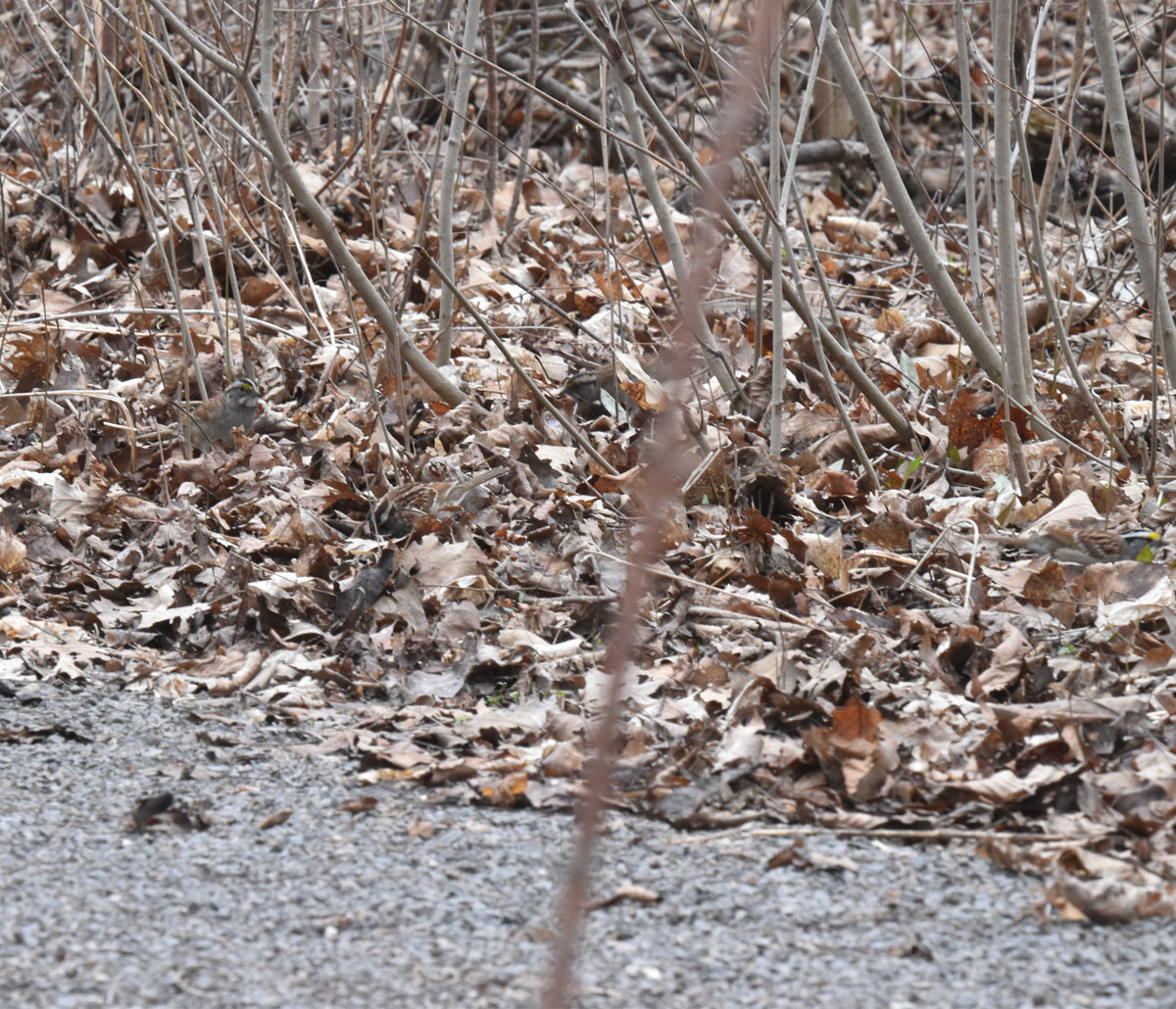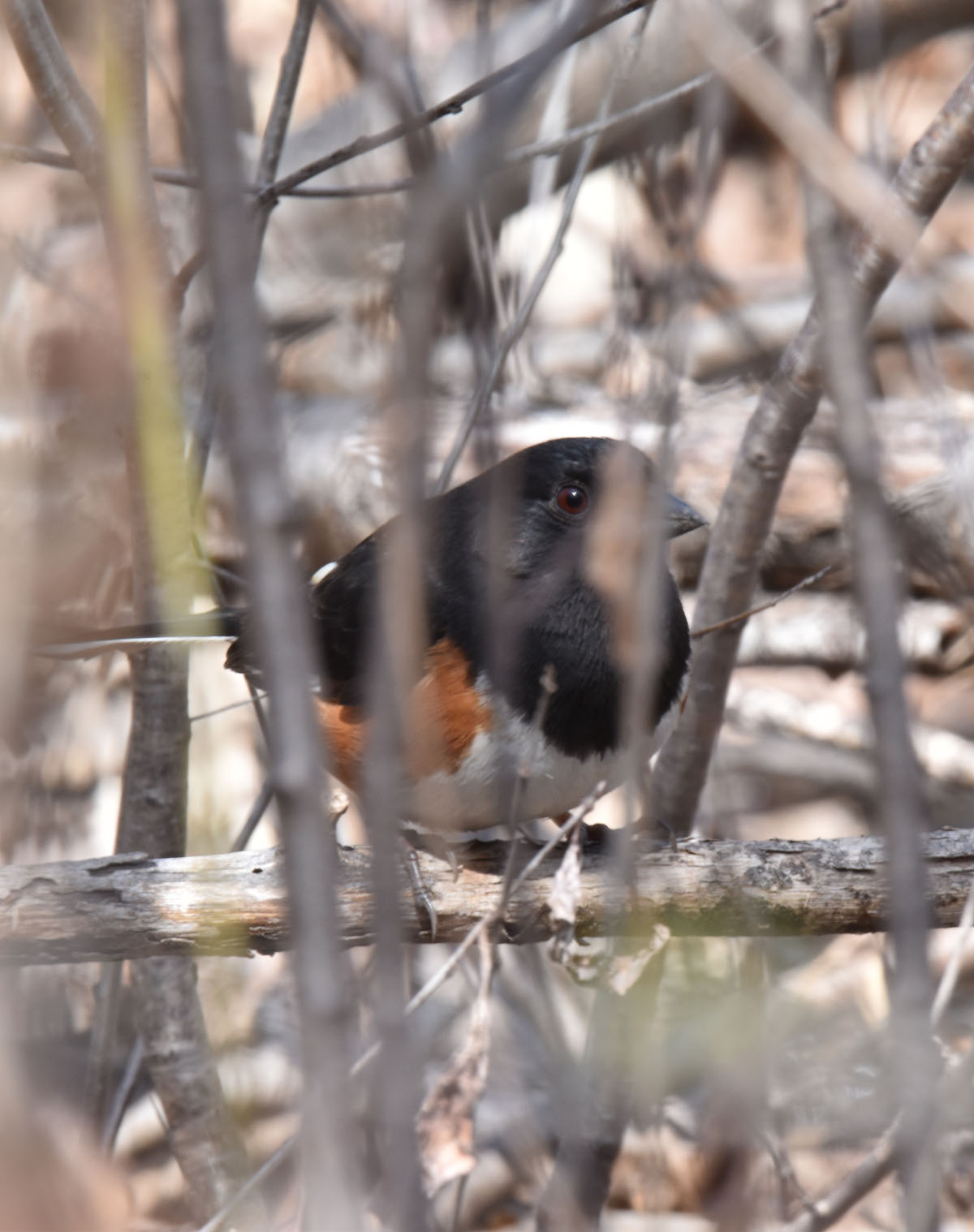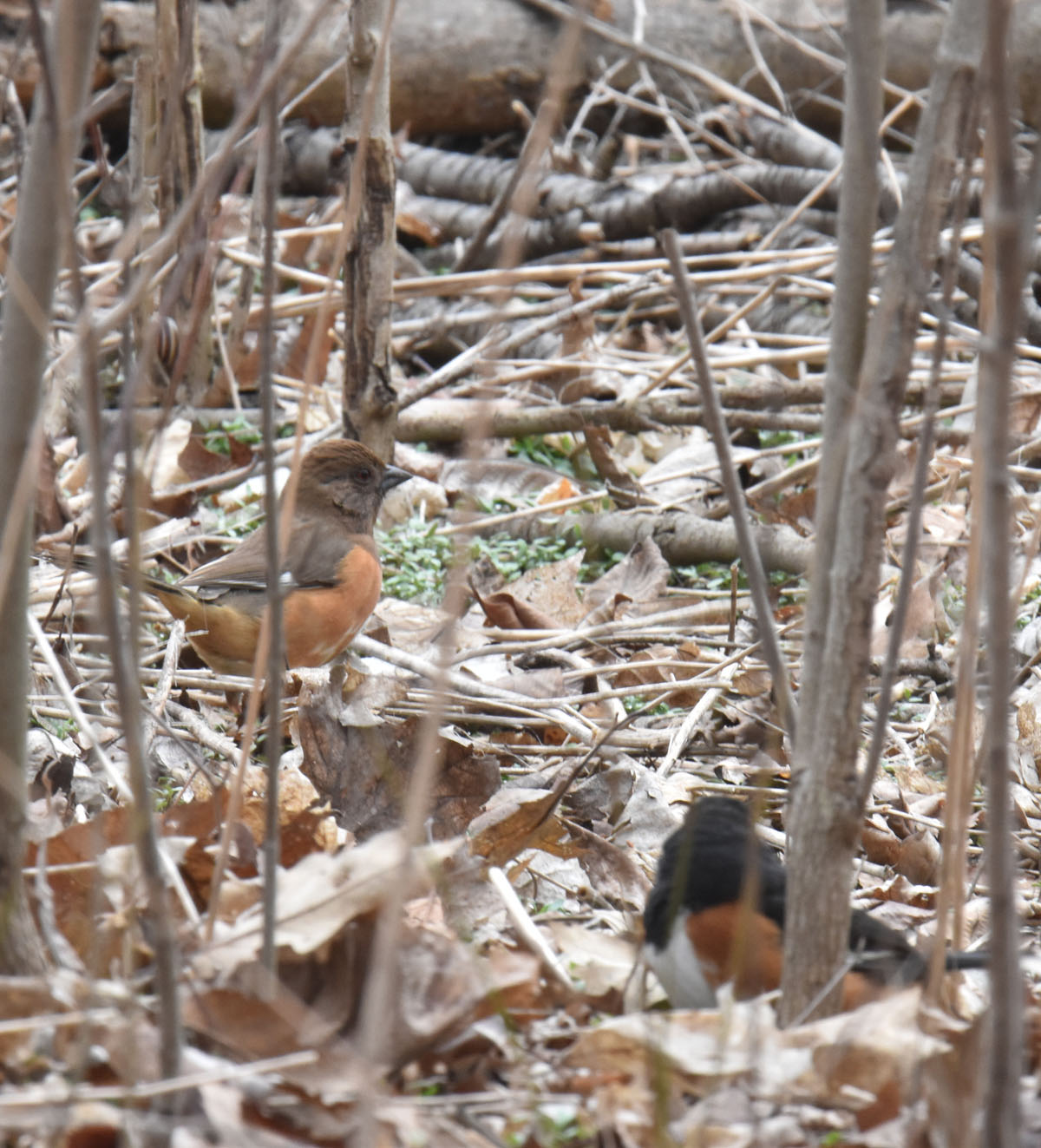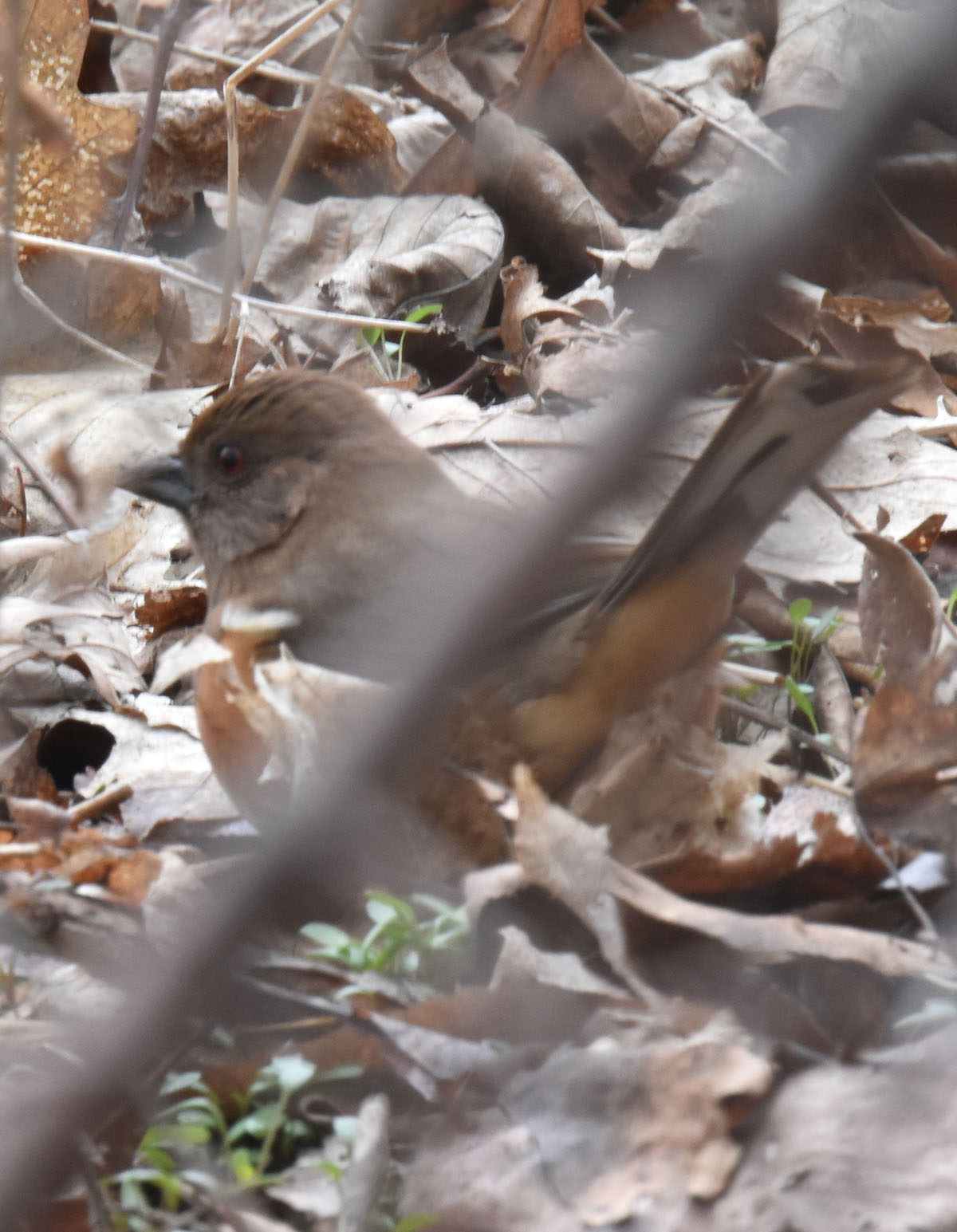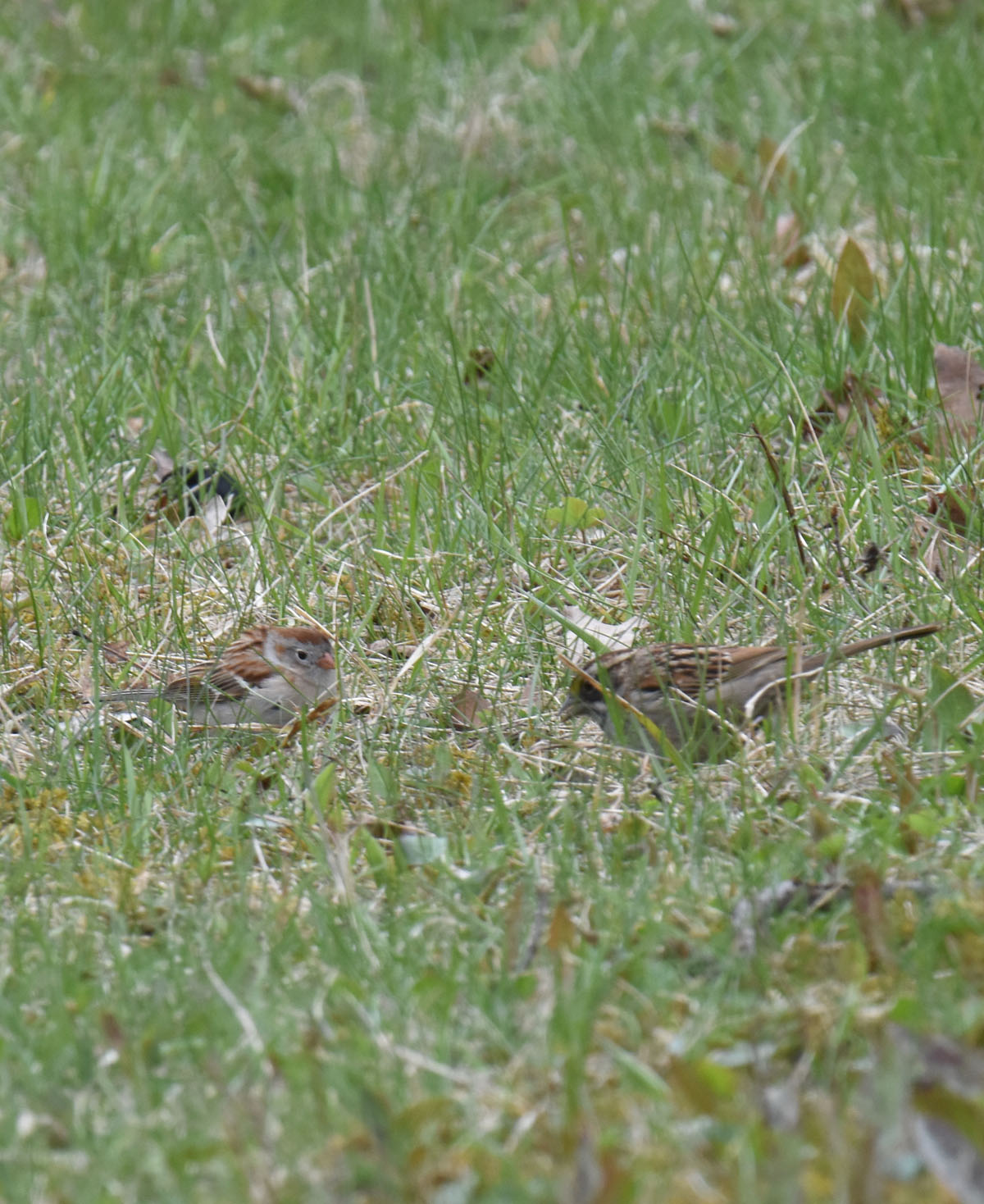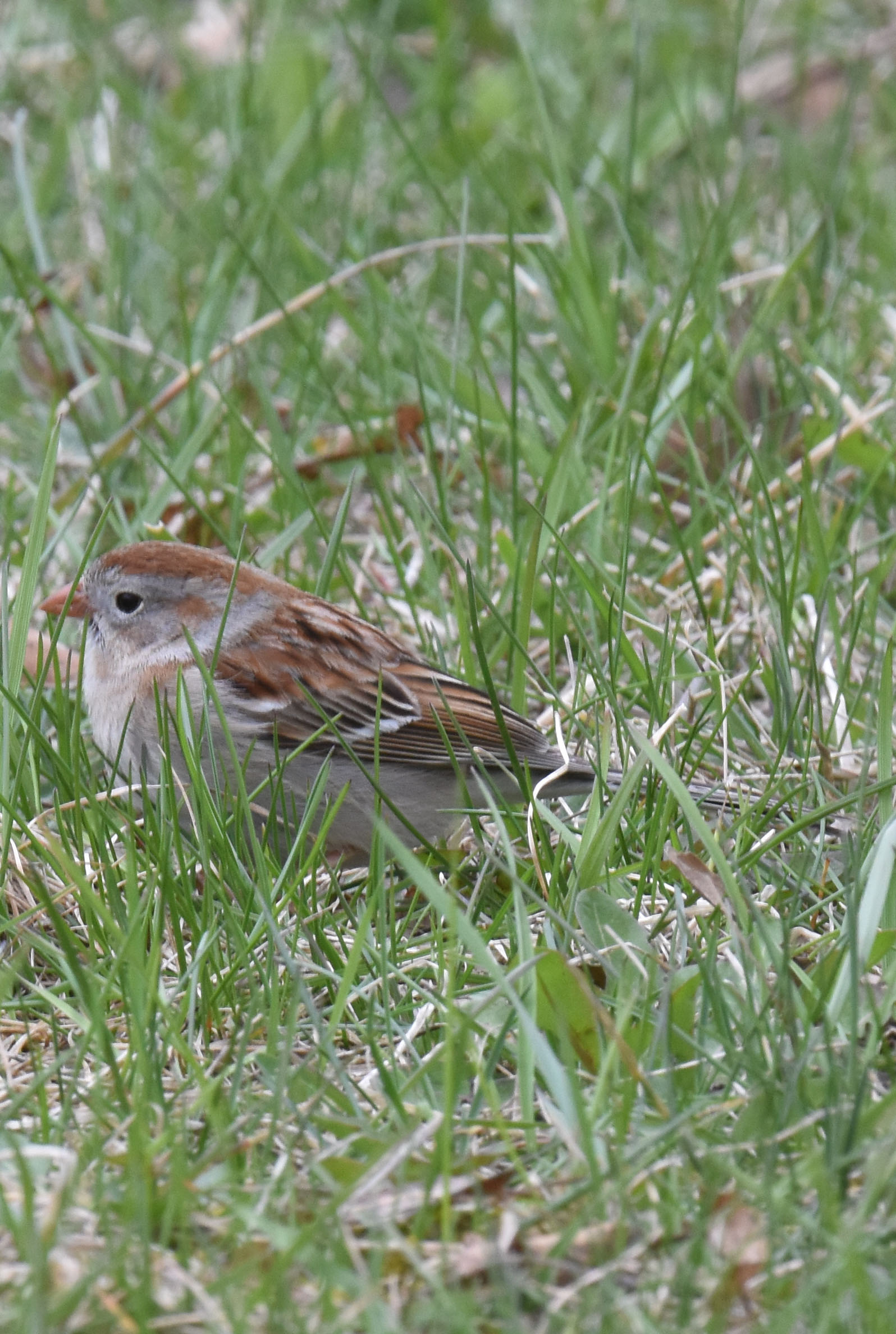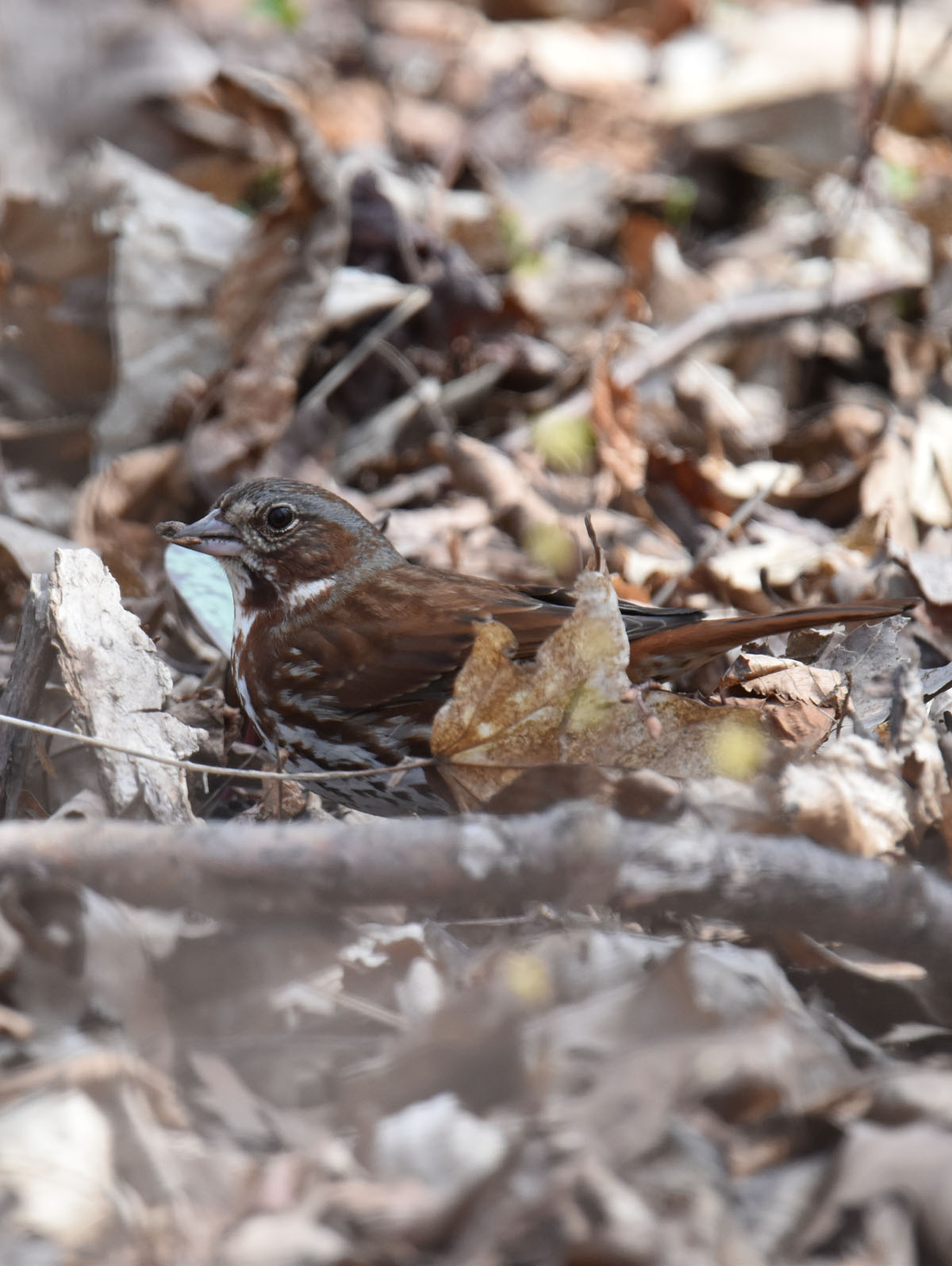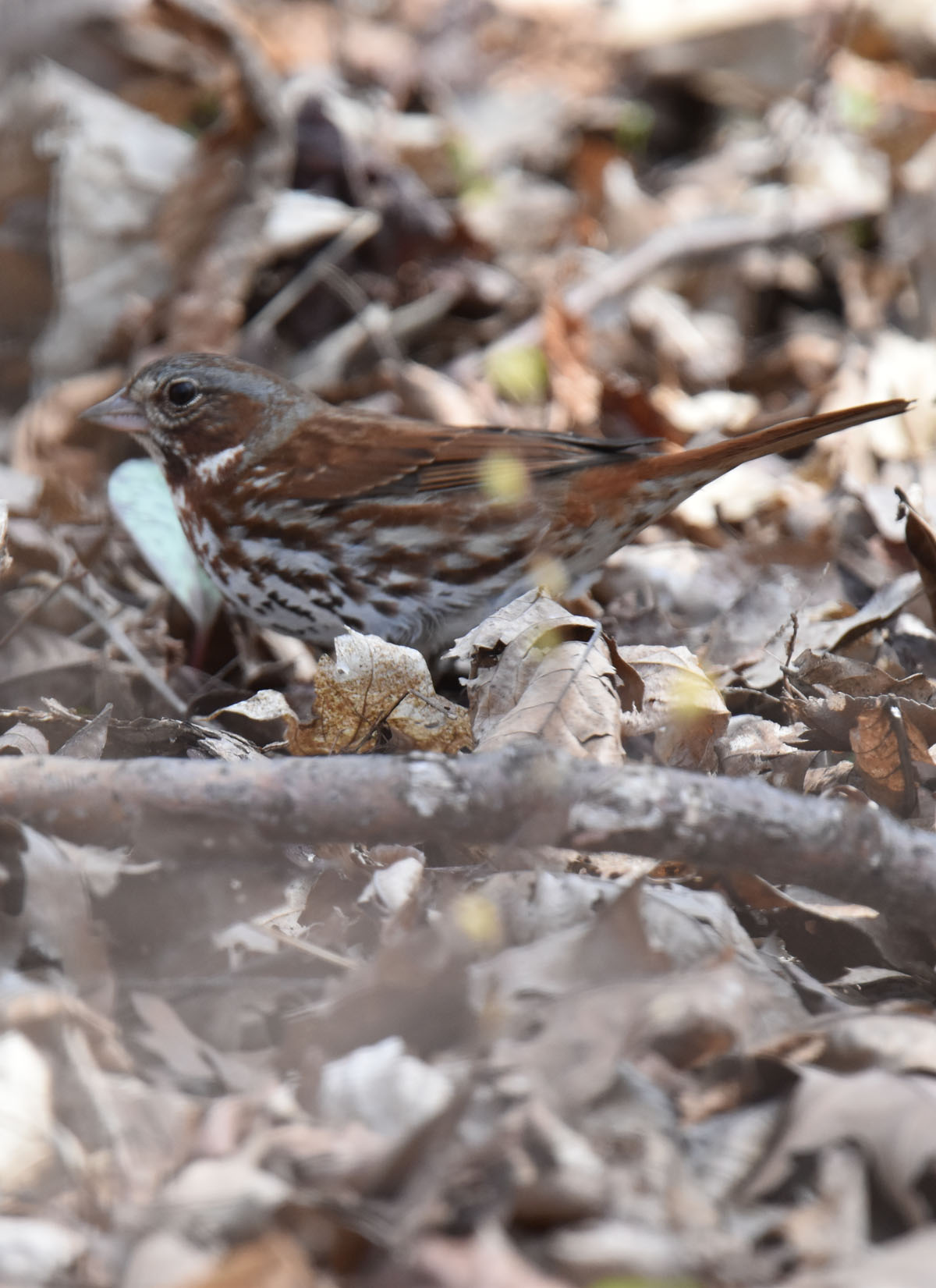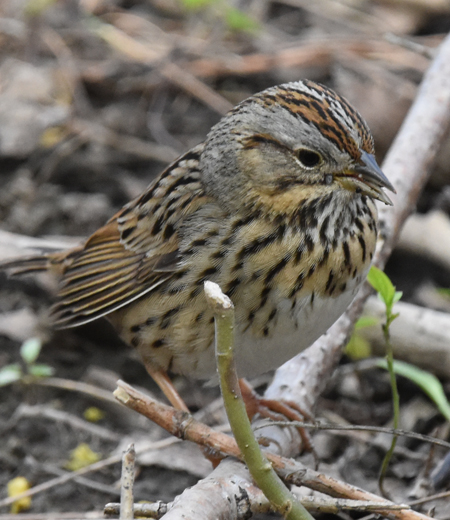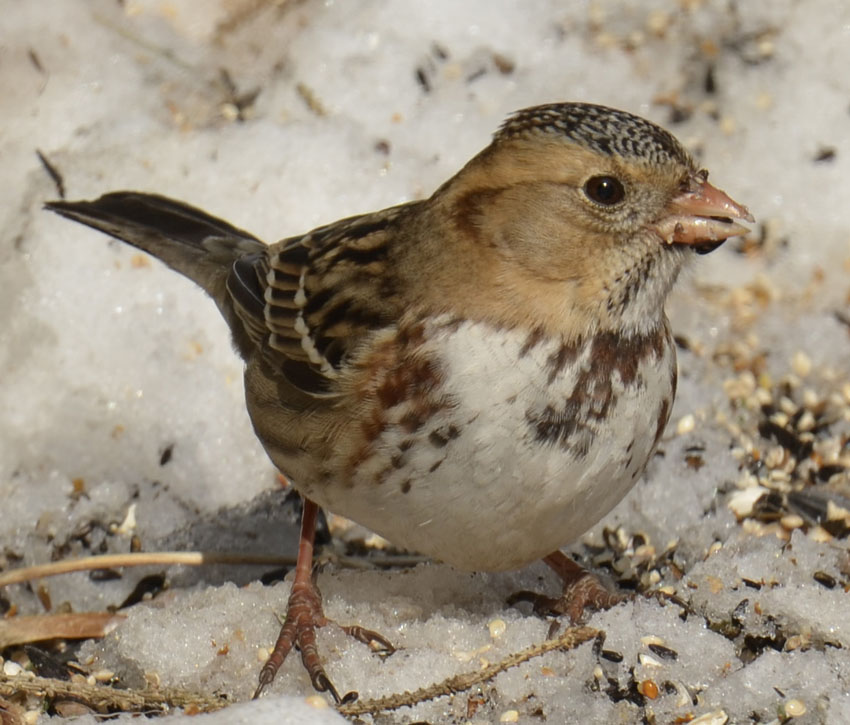Each spring in Mississauga, large numbers of White-throated Sparrows flock through the woods, parks and back yards. Over the years I’ve learned that if I want to find some of the less common, unusual or rare sparrows (for my area) it’s important to slow down and look at each bird closely.
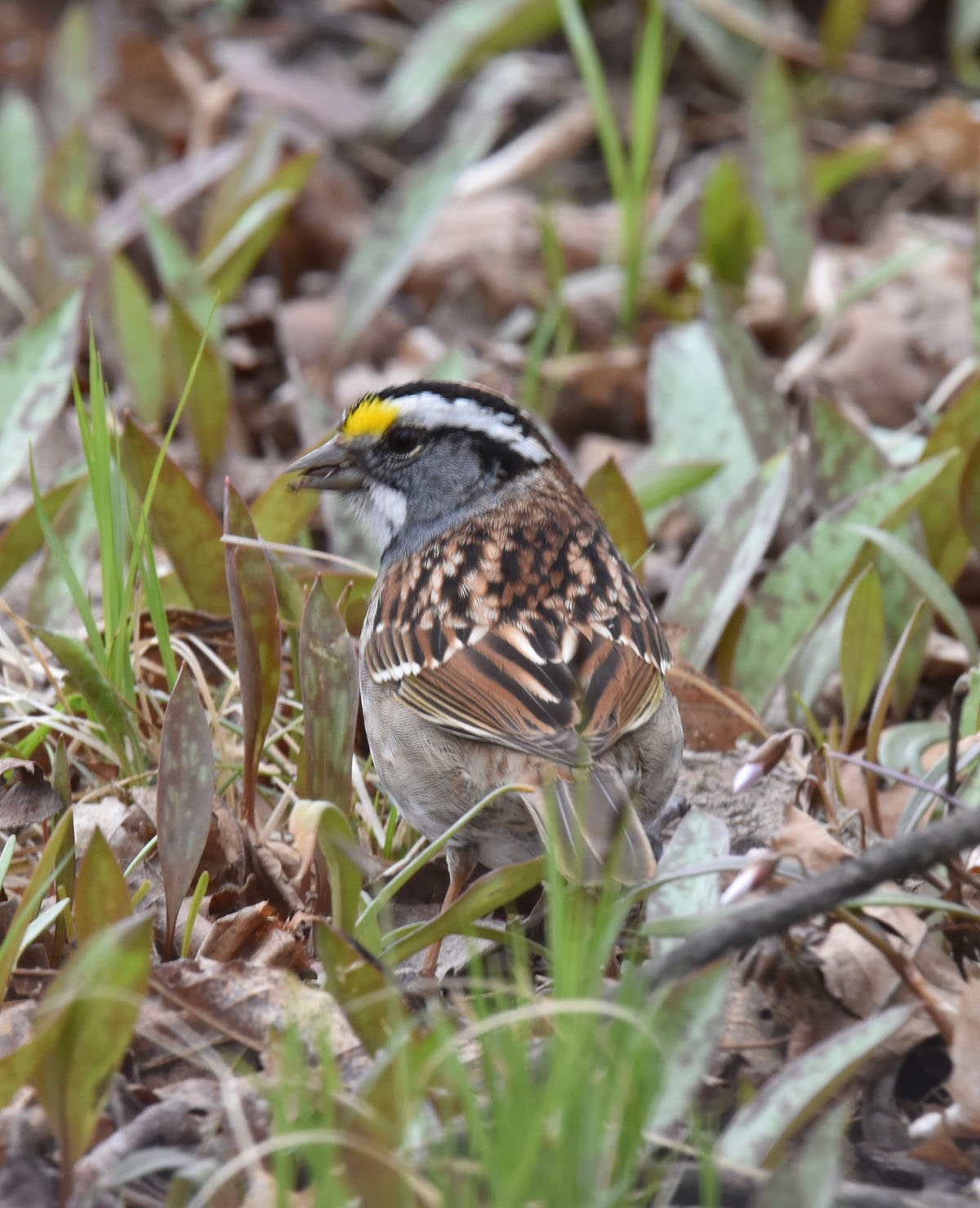
This is a typical “white” White-throated Sparrow.
Wait! That Sparrow is Rusty. And Black. And Has Partly White Tail Feathers
In April, I came around a bend in a forest path to find the leaves literally bubbling with birds. Everywhere I looked, leaves were being tossed, kicked, and shuffled aside. As expected, most of the sparrows had a small yellow mark near their bill and eye. Some had the vivid white markings and others had the duller tan markings on their heads but all were White-throated Sparrows.
Or were they?
Suddenly one sparrow popped out of the leaves that was rusty brown like a Robin. Wait, it was black too. And when it flew a few yards, it flashed a partly white tail feathers like a Junco.
It was an Eastern Towhee, formerly known by the more descriptive name Rufous-sided Towhee. Looking closely at the sparrows, I found he had a friend nearby – a more brown female Towhee.
What’s This Small Sparrow with the Orange (or Pink) Beak?
Another April day, the flock of White-throated Sparrows spilled out of the woods onto the adjacent grassy hydro cut . As I prowled closer, I noticed one sparrow was paler and smaller, so I immediately started taking photos. When I got close enough, I could see its bill was orange and I knew my hunch was correct. (Field guides say the bill is pink but it looks orange to me. A Junco bill looks pink to me!)
This was a Field Sparrow hunting alongside the group of White-throateds.Watching the Field Sparrow was quite fun because it made the most amazing arcing leaps up and over grass and down again not using its wings. It’s hunting technique must have worked because I could see it busily swallowing after each pounce.I’m not familiar enough with them to know if this is typical behavour or not.
Not All Foxes Have a Bushy Tail
A few days later, I heard more sparrows energetically kicking through the leaves. Although I had seen at least 10 White-throated Sparrows in the last 15 minutes, I stopped. (I always live in hope!)
This time, I was rewarded: The large blocks of colour told me I was looking at a Fox Sparrow. These sparrows are not rare but they are not particularly common in my parks and they seem fairly shy preferring to move on if I watch them too long.
The first time I saw this sparrow, it was too far from the trail for a reasonable photo. Luckily, the flock of White-throats moved and it moved with them. So I met the group again and the Fox was much closer to the path that second time. I often find having the patience to walk the same trail more than once on the same ramble improves my chances of a good find or a good photo. (Good for me–not for National Geographic!)
Keeping Watch for a Lincoln’s Sparrow
Another sparrow I am still watching for this spring is a Lincoln’s Sparrow. I have found them in the past, usually once again with or near the more abundant White-throated Sparrows.
Something about their thin dark streaks appeals to me: they look very tidy. So I hope to see one again this spring–maybe this week!
Every Flock of Sparrows Can Obscure an Oddity
A few winter’s ago, another bird enthusiast carefully looked through a flock of House Sparrows along a winter trail. That led to the report of a sparrow usually only found in the west, called a Harris Sparrow. I drove to the nearby town to try to see it. Luckily for me, another bird watcher was there who pointed it out to me.
How To Find Unusual Sparrows
These are the things that I try to do to increase my chances of finding a rare (to me) sparrow:
- Have patience.
- Look at each bird in a flock. Don’t believe they are all the same unless you’ve checked each one’s id.
- When in doubt, take some photos. With a photo I can decide later if it’s just a juvenile or an alternate plumage or if it’s a less common bird.
- If someone reports a rare sparrow nearby, go visit. Chances are good I will find it with a half dozen long-lensed cameras pointing at it!
- Take the time to go back to the same area again. Sometimes something new has arrived or is more willing to pose.
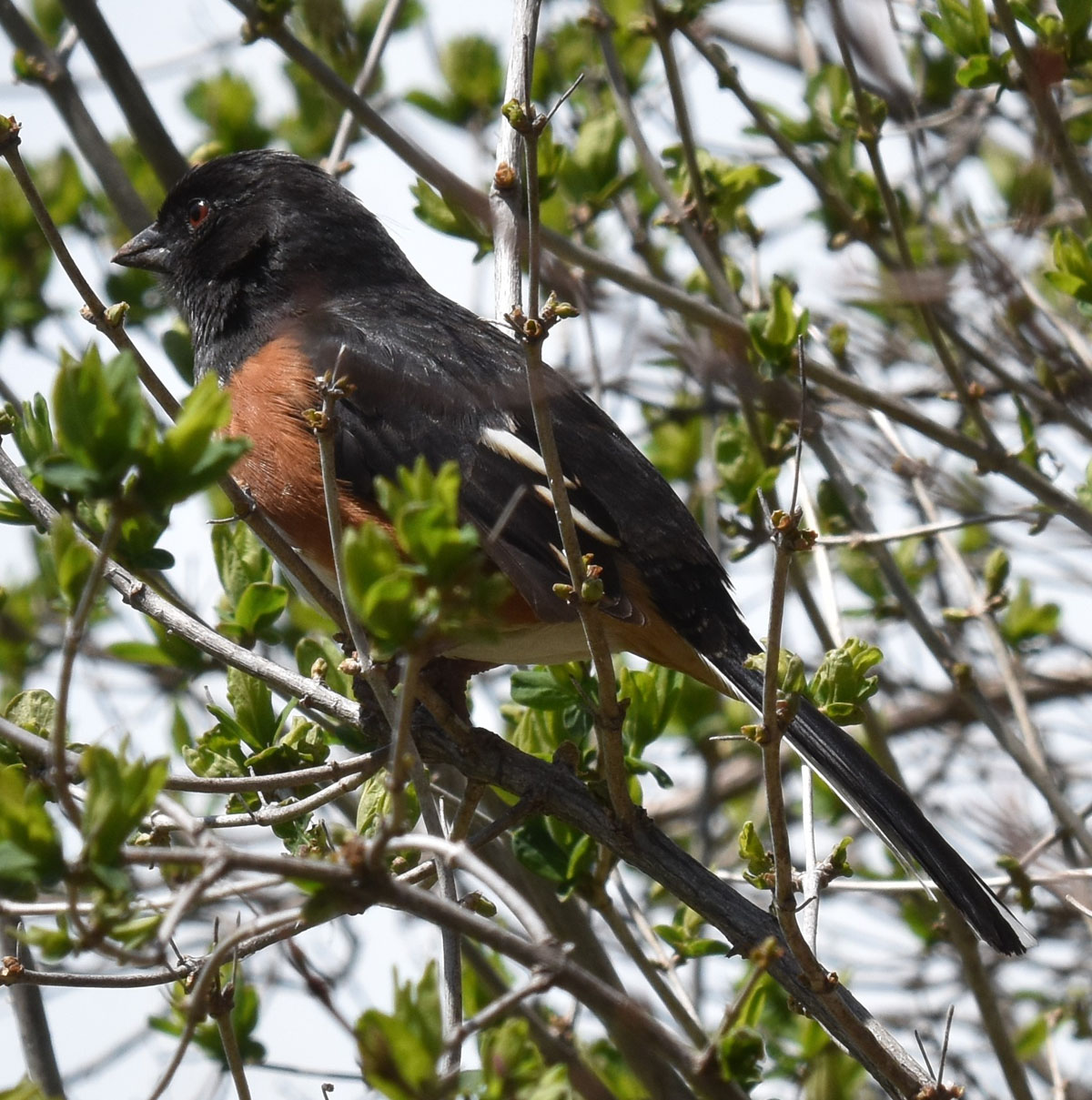
The third time I met the Towhees, they decided to fly up briefly, making it easier to see them.
Related Reading
Join In
Do you have any tips for finding less common Sparrows? Please share your ideas with a comment.

